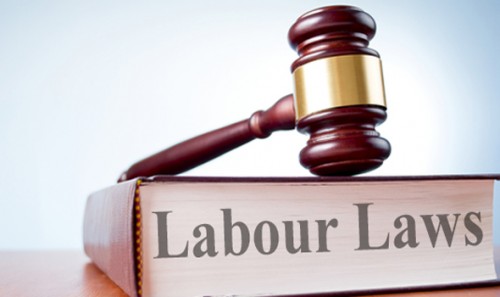Webinar Helps Business Owners Prepare for COVID-19 Legislation Employment Law Changes

National labor and employment law firm FordHarrison recently hosted “Coronavirus (COVID-19) Update—Is Your Business Ready for the Employment and Employee Benefit Changes?”
The March 20 webinar offered useful information regarding main issues employers are facing amid the COVID-19 pandemic, as well as best practices to help those businesses mitigate the associated employment law risks, said Aaron Schulenburg, SCRS executive director.
During the webinar, three partners from FordHarrison informed attendees how to prepare their businesses to deal with the worldwide pandemic, and they discussed the employment laws impacted by the virus, as well as the impact of the Family First Coronavirus Response Act on employers.
The webinar presenters included Sami Assad from the Hartford, CT, office, Tiffany D. Downs from the Atlanta office and Rachel Ullrich from the Dallas office, all members of the company’s Coronavirus Task Force.
The webinar began with an overview of COVID-19 and an update on its current status, based on information from the CDC’s website.
Ullrich took over, discussing the Family First Coronavirus Response Act (FFCRA), which President Donald Trump signed into law March 18. The FFCRA will have a significant impact on employers, specifically those who have fewer than 500 employees, a category that most collision repair facilities fall under, as the act requires those employers to provide paid sick leave and partially paid emergency FMLA leave.
Effective April 2, the Emergency Paid Sick Leave Act will require private employers with less than 500 employees to provide paid sick time to all employees, regardless of how long they’ve been employed, to the extent that the employee is unable to work (or telework) due to certain COVID-19-related reasons.
“In the broadest terms, paid sick leave applies to employees who are caring for themselves because of COVID-related symptoms or illness, an employee who is taking care of an individual who’s in quarantine or isolation, or has been advised by the healthcare provider to self-quarantine or is taking care of their son or daughter because a child’s school or place of care has been closed…due to COVID-19,” Ullrich said.
Employees must be provided with up to 80 hours of paid sick leave; for part-time employees, they would receive the equivalent based on the previous two weeks’ average.
“If time off is taken for self-care, employees must be compensated at the higher of the employee’s regular rate of pay, federal minimum wage or the local minimum wage. The higher wage applies,” Ullrich explained. “If time off is taken to care for someone else or a child who is not in school, employees must be compensated at two-thirds of their regular rate of pay.”
There are caps applied to the daily wages paid under the sick leave, and it cannot carry over, with right to pay ending Dec. 31, or when the current crisis is resolved.
Employees cannot be required to find a replacement before being permitted to take this paid sick time. Employees may use the paid sick time before other leave and cannot be required to use other leave first.
Failure to provide leave is an FLSA violation, carrying fines and/or imprisonment up to six months; willful retaliation is also a violation of FLSA.
Very limited guidance has been provided so far, and Ullrich recommended shop owners seek legal counsel if they have specific concerns about anything related to this act prior to guidance being released by the U.S. Secretary of Labor, hopefully within the next two weeks.
This paid sick leave applies only to COVID-19-related issues, and should not be able to be used intermittently since the employee will need to self-quarantine for 14 days, with the exception of the childcare provision.
Most relevant to multi-location collision repair operations is the question of how to calculate the 500-employee threshold, which has not yet been clarified, but FordHarrison recommends following the guidance of FLSA until further clarification is provided.
“It’s going to take some patience,” Ullrich warned.
Also effective April 2 will be the new FMLA amendments, applicable to employers with fewer than 500 employees and employees who have worked 30 days or more, including part-time associates.
It can be applied to school and childcare-related COVID-19 absences if the employee cannot work or telework, allows employees to use other available paid time off during the first 10 days, which may be unpaid, and provides for 12 weeks of job security, including 10 weeks where the employee receives two-thirds of their regular pay, capped at $200 per day or $10,000 in the aggregate.
“As a practical matter, most employees are going to be using the paid sick time up first,” Ullrich pointed out.
After discussing job restoration requirements, Ullrich answered some common questions, but primarily reminded webinar participants: “This is an amendment to the FMLA. It provides an additional reason for leave. Look to the existing FMLA guideline when you can. This is ever-evolving.”
The webinar then segued into a discussion on the employee benefits issues, presented by Downs.
She explored the implications of cost-cutting measures, depending on what is used, such as furloughs, layoffs, reductions in force, reductions in hours and leaves of absence.
In order to make changes to payroll deductions, employees must qualify for specific events under Section 125. Under the FFCRA, all fully insured and self-funded plans are required to cover testing and treatment for COVID-19.
As it pertains to retirement and pension plans, Downs recommended employers review their plan terms to determine if mid-year changes can be made and explore whether plan terms provide for hardship loans or in-service withdrawals for plan participants. She also hypothesized about the possibility of congressional or governmental agency relief before turning the presentation back over to Assad.
Assad explored potential legal issues for employers related to current laws such as ADA, OSHA, Title VII, FLSA, WARN and others.
Under the ADA, COVID-19 is not generally a disability, but the virus could lead to, or impact current, disabling conditions. It also requires employers provide reasonable accommodations for persons with existing disabilities.
Due to the unusual circumstances of potential coronavirus exposure, employers may require individuals who take trips to Europe and other Level 3 countries to stay home upon their return for a 14-day incubation period.
“That is not considered discriminatory,” Assad clarified. “Just this week, the EEOC issued guidance stating that, given the nature of what we’re dealing with, it is OK to check temperatures (of employees entering the workplace.) If you do take this measure, you need to make sure you implement proper procedures to ensure the safety of your workers.”
Assad also warned to exercise caution when asking employees questions about their conditions, to make sure that the questions are only connected to COVID-19.
“With any screening requirements or measures you put in place, make sure that they don’t intentionally or inadvertently violate Title VII; be careful of potential national origin, race or ethnicity discrimination claims,” Assad said.
OSHA requires employers provide a workplace free from “recognized hazards” that cause, or are likely to cause, death or serious physical harm. Under OSHA, employees may refuse to work when there is a reasonable belief there is a risk of imminent death or serious injury.
“If the employer is taking all the precautions that are being called for by the CDC, by your state and local governments, and is able to open for business, but you have an employee who says they aren’t comfortable coming into the workplace, that employee should not have a valid basis and (must) come to work,” Assad said.
“Now if the employer is not adhering to the various requirements being issued, and those are coming up by the day, it’s possible that an employee (may have a valid basis) to stay home from work, and under OSHA… cannot be retaliated against,” Assad said.
Assad concluded with issues related to FLSA and NLRA, and said the WARN Act only becomes an issue when a six-month shut down is anticipated.
“They take a look at WARN related issues if you are contemplating a large layoff or shutdown,” Assad said.
Issues related to the collision repair industry specifically should be directed to FordHarrison’s Cory J. King, who has been working closely with the industry for nearly two decades.
King encourages repairers to take advantage of the free resources available on the firm’s website for best practices to help mitigate legal risks associated with the COVID-19 pandemic.
“Automotive supply and repair, including collision repair in particular, is considered an ‘essential service’ supporting the critical transportation infrastructure in most, if not all, areas of the United States,” King said. “This means that collision repairers may continue operations while, of course, complying with other federal, state and local orders regarding social distancing, group sizes, etc.”
To view this webinar, as well as any past or upcoming webinars presented by FordHarrison on this topic, visit the Coronavirus Task Force’s website.


